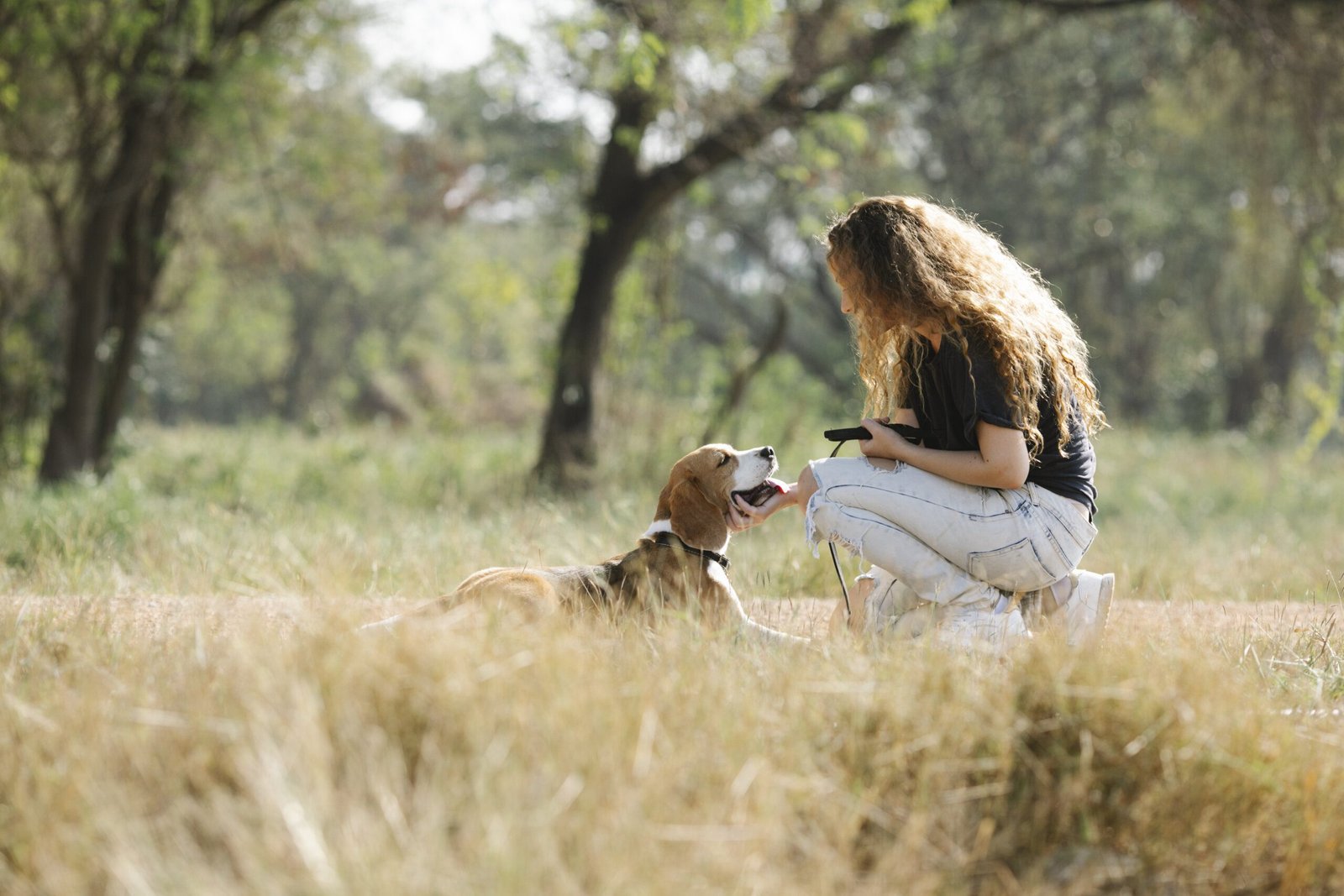Table of Contents
Imagine taking a trip back in time, to medieval times, where you would encounter a friendly and vibrant companion – the Beagle. Originally bred for hunting, these small yet mighty dogs have a rich history that dates back centuries. Today, Beagles have transitioned into the role of beloved companions, known for their exceptional sense of smell and affectionate nature. With their muscular bodies and energetic personalities, they require plenty of physical activity to thrive. From their importation to the United States in the 1830s to their current popularity as family pets, the Beagle has a fascinating story that continues to captivate dog lovers worldwide.

Origins and Early History
Medieval Origins
The origins of the Beagle breed can be traced back to medieval times. The exact origins are uncertain, but it is believed that Beagles were developed in England by crossing various small scent hounds. These dogs were used by hunters to track rabbits and other small game. The word “beagle” is derived from the French word “beigh,” which means “open throat.” This refers to the breed’s distinctive vocalizations while on the hunt.
Development as Hunting Dogs
Beagles were primarily developed as hunting dogs, known for their exceptional sense of smell and tracking abilities. They were specifically bred to track and chase small game, such as rabbits and hares. Beagles were highly valued for their stamina, agility, and determination.They were able to locate and flush out game from dense vegetation, making them indispensable for hunters.
Introduction to the United States
In the 1830s, Beagles were introduced to the United States. They were brought to the country by English immigrants who valued the breed for its hunting prowess. Beagles quickly gained popularity in the U.S. due to their adaptable nature and versatility in various hunting terrains. They were especially prized in the southern states, where they were used for hunting small game, like raccoons and squirrels. Over time, Beagles transitioned from being primarily hunting dogs to beloved companions for families across the country.
Physical Characteristics
Muscular and Athletic Body
Beagles have a sturdy, muscular, and athletic body. They have a well-balanced bone structure, which allows them to move with ease and grace. Their compact size, coupled with their muscular build, enables them to navigate and maneuver through various terrains while hunting. Beagles are small to medium-sized dogs, typically weighing between 20-30 pounds (9-13 kg). They have a distinctively proportionate body, giving them a sleek and agile appearance.
Distinctive Features
One of the most distinctive features of the Beagle breed is their expressive eyes. They have large, wide-set eyes that exude warmth and intelligence. Their eyes can range in color from brown to hazel and often have a soulful, pleading expression. Another notable feature is their long, droopy ears. These ears are soft and velvety to the touch and are an essential tool for the Beagle’s hunting abilities, as they help to funnel scents towards their nose.
Grooming Requirements
Beagles have a short, dense, and weather-resistant coat that requires minimal grooming. Regular brushing with a soft bristle brush helps to remove loose fur and keep the coat shiny. While Beagles are not heavy shedders, they do shed moderately, so brushing can help minimize loose hair in the home. Beagles only require baths as needed, especially if they get dirty or develop a noticeable odor. Additionally, their ears, which are prone to infections, should be checked regularly and cleaned with a veterinarian-recommended ear cleansing solution.

Role as Hunting Dogs
Original Purpose and Skills
The Beagle breed’s original purpose was as a hunting dog, specifically for tracking and chasing small game. They were highly valued for their exemplary scenting abilities and their determination to pursue game relentlessly. Beagles were particularly renowned for their skill in tracking rabbits, known as “beagling.” Their ability to pick up scents and follow trails made them invaluable assets to hunters, as they could navigate through dense underbrush and indicate the presence of game.
Hunting Techniques
Beagles use their keen sense of smell to detect and track scents left by small game animals. Their strong nose, combined with their relentless drive, allows them to follow scent trails for miles. While hunting, Beagles utilize a technique called “casting,” where they move in a zigzag pattern to pick up scents from various directions. They maintain a steady pace and can cover a significant amount of ground while staying focused on their target.
Evolution of Beagle Hunting
Over time, the role of Beagles in hunting has evolved. With the advent of more efficient hunting methods, such as firearms and larger game animals, the need for Beagles to track small game declined. However, Beagles continue to be employed in hunting activities, particularly in organized field trials. These trials assess a Beagle’s hunting skills and are often conducted on carefully maintained grounds where rabbits are released to be tracked and chased by the participating dogs.
Transition to Companionship
Shift in Beagle’s Role
The role of the Beagle shifted from primarily being a hunting dog to becoming a beloved family companion. This transition can be attributed to several factors, including changes in hunting practices and the breed’s friendly and sociable nature. As hunting for sport became less prevalent, Beagles began to be valued more for their affectionate temperament and ability to bond with their human family members.
Popularity as Family Pets
Beagles gained popularity as family pets due to their friendly and amiable nature. They are known for their exceptional patience and tolerance, making them an excellent choice for families with children. Beagles thrive on human companionship and enjoy being part of a family unit. They are affectionate, loyal, and often known for their gentle interactions with children.
Beagles and Children
Beagles are generally good with children and can form strong bonds with them. They are patient and tolerant, making them a suitable choice for families with young children. However, as with any interaction between children and dogs, supervision is essential to ensure the safety and well-being of both. Children should be taught how to interact respectfully with dogs, and Beagles should be given their space and time to adjust to new situations.

Detection Work and Sense of Smell
Beagles’ Exceptional Sense of Smell
Beagles are renowned for their exceptional sense of smell. Their olfactory capabilities are among the best in the dog world. Beagles possess millions of scent receptors in their noses, which enable them to detect and track scents with remarkable accuracy. This heightened sense of smell makes them highly suitable for various detection work, where their scenting abilities are put to use.
Common Uses in Detection Work
Beagles are frequently employed in detection work due to their exceptional scenting abilities. They are commonly used in airports and other transportation hubs to detect prohibited items, such as drugs, explosives, and agricultural products. Beagles are also utilized in search and rescue operations, where their ability to detect human scent can be invaluable in locating missing individuals. Their compact size and agility make them well-suited to navigate through various terrains during search and rescue missions.
Training for Detection Work
Beagles undergo specialized training to excel in detection work. They are taught to associate specific scents with a reward, such as treats, toys, or praise. This process, known as scent discrimination training, helps Beagles identify and indicate the presence of specific scents accurately. Beagles are highly motivated by food rewards, which makes them eager and enthusiastic learners during their training sessions.
Temperament and Training
Friendly and Sociable Nature
Beagles are known for their friendly and sociable nature. They typically exhibit a happy and outgoing demeanor, making them excellent companions. They are highly adaptable and can thrive in various environments, including apartments or houses with yards. Beagles enjoy human company and crave attention and affection from their owners. They are social dogs and generally get along well with other animals and children.
Vocal Tendencies
One notable characteristic of the Beagle breed is their vocal tendencies. Beagles are known for their distinctive howling, baying, and barking. They use their voice to communicate various emotions, such as excitement, boredom, or anxiety. Beagles have a melodious howl that can be quite charming, but their vocal tendencies may not be suitable for all living situations. It is important to provide proper training and establish boundaries to manage their vocalizations.
Training Challenges and Patience
Training a Beagle can sometimes present challenges due to the breed’s independent and stubborn nature. Beagles are intelligent dogs but can have a mind of their own, making consistent and patient training essential. Positive reinforcement techniques, such as rewards and praise, work best with Beagles. Harsh or punitive methods can lead to resistance and deter their willingness to learn. Consistency, routine, and firm but gentle guidance are key to successfully training a Beagle.

Physical Exercise and Health
Activity Requirements
Beagles are an active breed that requires regular physical exercise to stay healthy and happy. They thrive on mental and physical stimulation and should be provided with ample opportunities for exercise. Beagles should have at least 30 to 40 minutes of moderate exercise each day. This can include walks, runs, playtime in a securely fenced yard, or engaging in activities such as obedience training or puzzle toys that challenge their minds.
Maintaining a Healthy Beagle
To maintain a healthy Beagle, proper nutrition, regular veterinary check-ups, and preventive care are crucial. Beagles should be fed a balanced diet that meets their nutritional needs, taking into consideration their age, size, and activity level. It is important to monitor their weight and adjust their diet or exercise routine accordingly to prevent obesity. Routine vet visits, vaccinations, and preventive treatments for parasites are essential to ensure their overall health and well-being.
Common Health Concerns
As with any breed, Beagles can be prone to certain health issues. Some of the common health concerns for Beagles include obesity, ear infections, and hip dysplasia. Monitoring their weight and ensuring regular exercise can help prevent obesity. Regular ear cleaning and inspection can reduce the likelihood of ear infections. Responsible breeding practices that include health screenings can help reduce the risk of hip dysplasia, a genetic condition affecting the hips.
Reproduction and Litter Size
Varying Litter Sizes
The litter size of Beagles can vary, typically ranging from one to ten puppies. However, the average litter size tends to be around six puppies. Factors such as the female Beagle’s age, health, and genetics can influence litter size. It is important to note that the higher the number of puppies in a litter, the more care and attention both the mother and puppies will require.
Breeding Considerations
Breeding Beagles should be done responsibly and with careful consideration. Responsible breeders focus on breeding healthy dogs that conform to breed standards and have good temperaments. Health screenings, such as hip evaluations and genetic testing, can help identify potential health issues that may be passed on to offspring. Breeding Beagles should only be done with the goal of improving the breed and ensuring the long-term well-being of the puppies.
Care for Beagle Puppies
Beagle puppies require proper care and socialization to develop into well-rounded adults. Puppies should be given a warm and safe environment, nutritious food, and regular veterinary check-ups. Socialization from an early age is crucial to help them become confident and friendly adults. Beagle puppies also need appropriate and consistent training to establish good behavior, boundaries, and basic obedience commands.

Pocket Beagles
Smaller Version of the Breed
Pocket Beagles are a smaller version of the standard Beagle breed. While there is no specific height or weight requirement, Pocket Beagles are generally under 13 inches (33 cm) tall at the shoulder and weigh less than 20 pounds (9 kg). The smaller size of Pocket Beagles makes them suitable for individuals or families who prefer a compact companion.
Historical Significance
Historically, the term “pocket Beagle” was used to describe small Beagles that were small enough to fit in a hunter’s pocket or saddlebag. These smaller Beagles were favored by hunters who needed a more portable dog during hunts. Over time, the term “pocket Beagle” has evolved to refer to Beagles that are bred specifically for their smaller size.
Modern Pocket Beagles
In modern times, there is debate surrounding the classification of Pocket Beagles as a separate breed or a smaller version of standard Beagles. Some breeders selectively breed Beagles for their smaller size, while others argue that size variations within the breed are natural and should not be specifically bred for. It is essential to research and ensure the credibility of breeders if looking to adopt a Pocket Beagle, as there may be variations in temperament and health among different breeding lines.
Popularity and Worldwide Recognition
Continued Popularity in the United States
Beagles have remained one of the most popular dog breeds in the United States for many years. Their friendly nature, adaptability, and versatility make them a sought-after choice for families and individuals alike. Beagles’ popularity can also be attributed to their appearance in popular culture, such as their representation in movies, advertisements, and as the mascot for various brands.
Beagles as Beloved Pets Worldwide
Beyond the United States, Beagles have gained recognition and popularity as beloved pets worldwide. Their friendly and sociable nature transcends cultural boundaries, making them a popular choice in many countries. Beagles can be found in various households, from urban apartments to rural areas. Their adaptability and portability make them suitable for a wide range of living environments and lifestyles.
Breeder and Show Competitions
Beagles, with their distinctive appearance and versatile skills, have also found success in breeder and show competitions worldwide. Breeders strive to breed Beagles that meet the breed standards and exhibit the breed’s desired traits. Show competitions provide a platform for breeders to showcase their Beagles’ conformation, temperament, and abilities. These competitions help maintain and promote the breed’s integrity and are a testament to the dedication and passion of Beagle enthusiasts globally.
In conclusion, Beagles are a fascinating breed with a rich history and a wide range of capabilities. From their medieval origins as hunting dogs to their transition to beloved family pets and their exceptional sense of smell used in detection work, Beagles have carved a place in the hearts of people worldwide. Whether as faithful companions or working partners, Beagles continue to capture our attention with their friendly nature, distinctive appearance, and unwavering loyalty.



